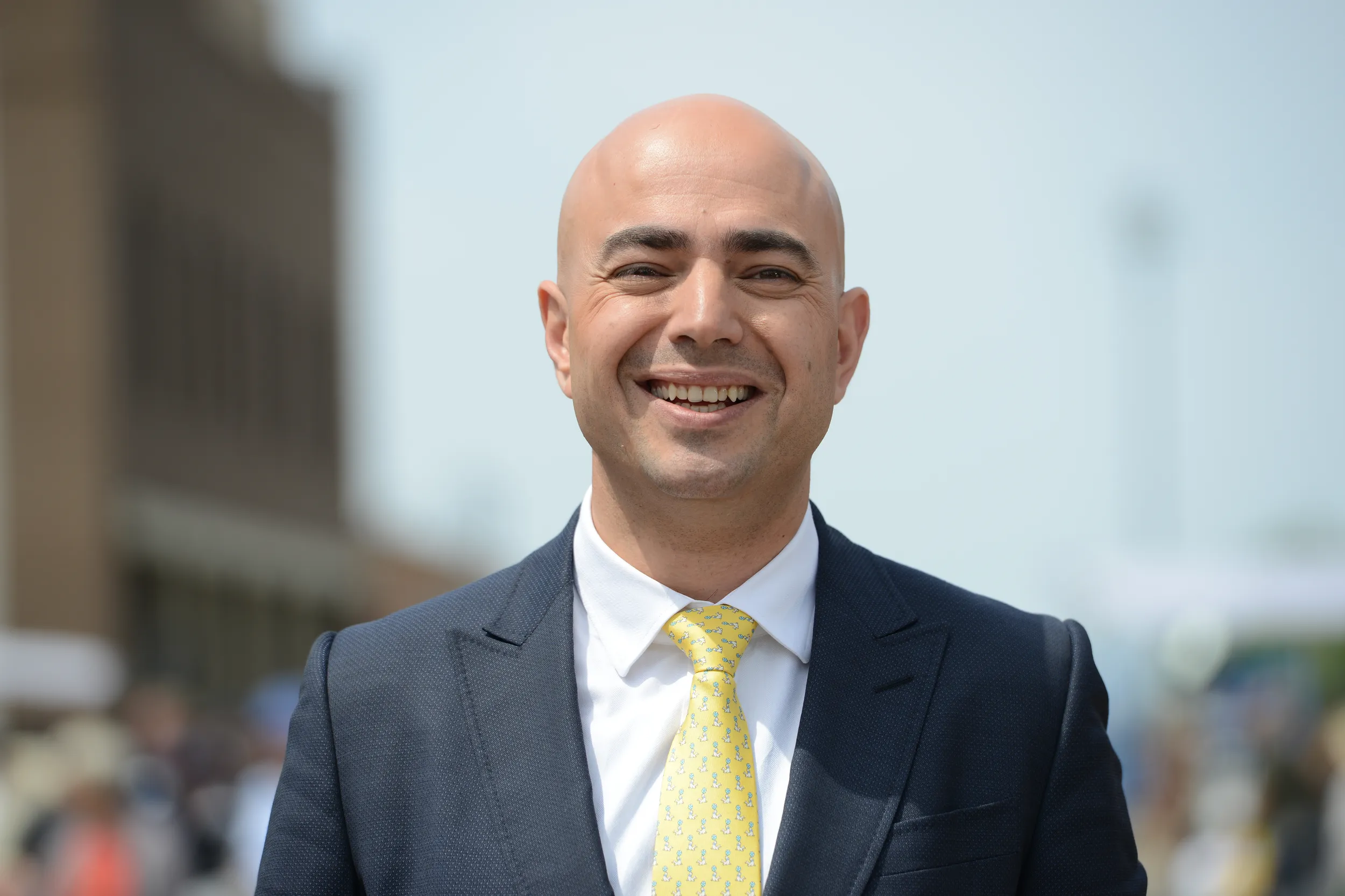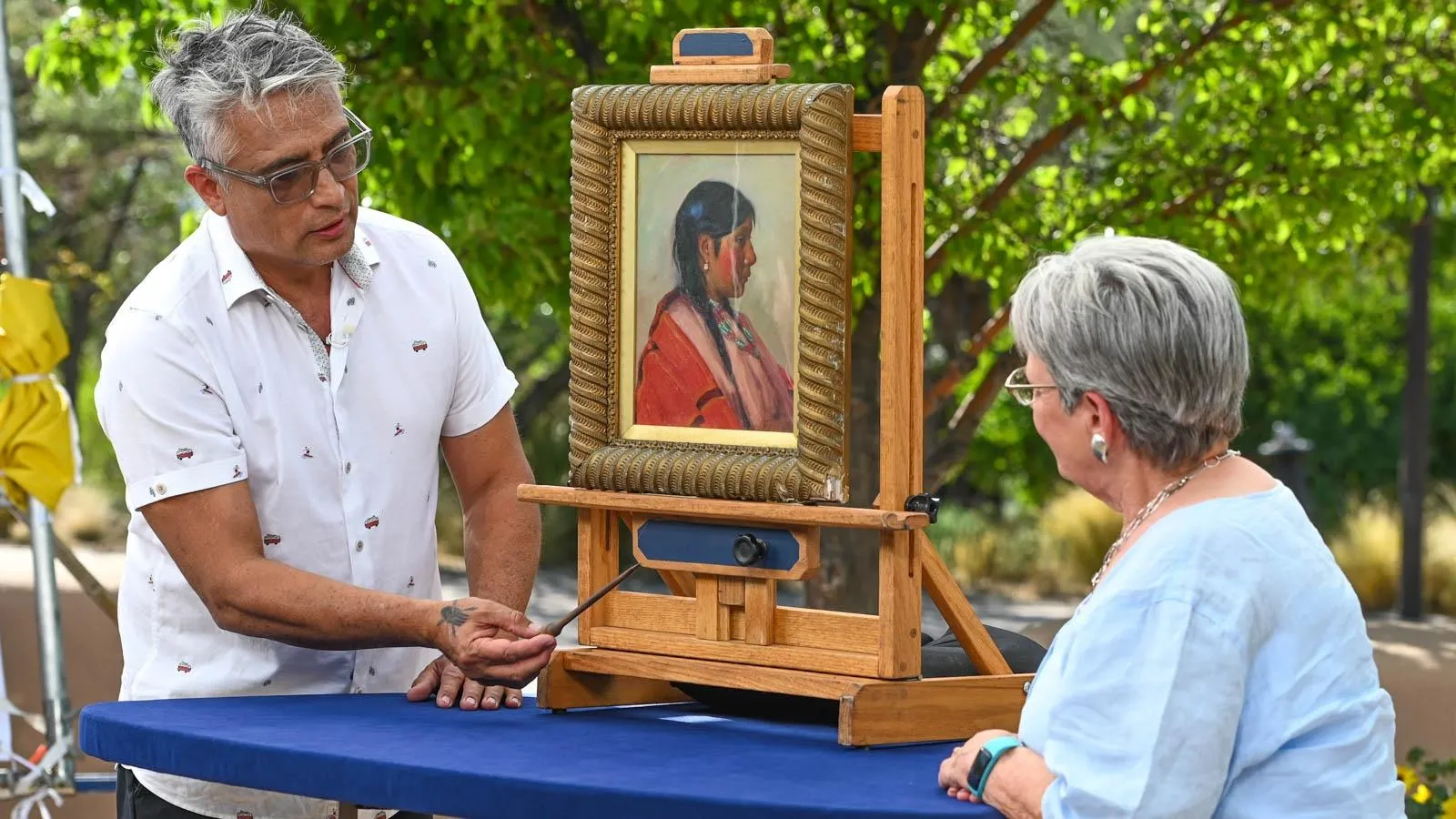GUEST: I brought here a painting that was in the family by Ángel Botello. I think the first photo that I noticed with this painting was about a year after I was born. So at least '62. We had already moved to Puerto Rico, and this was hanging on our wall. My parents and him and his wife, Christiane Botello, were dear friends. We would hang out on weekends together, and I became very close to his children. He had three children. When we moved back to Washington, D.C., he came along and rented a house behind ours and stayed the summer with us just so we could all hang out still. And so we'd been friends forever. I'm still friends with his kids.
APPRAISER: What do you remember about the artist, about the man, really?
GUEST: Oh, my gosh. He was larger than life. I mean, and he was a big kid. So when he had passed, it was just devastating to everybody. He had a huge sense of humor. He was sorely missed.
APPRAISER: And, and you brought a picture with, uh, with you, right?
GUEST: Yeah, this is myself and Ángel Botello when he visited us in D.C.
APPRAISER: Uh-huh.
GUEST: And in fact, behind it is another painting that we have of his.
APPRAISER: Okay.
GUEST: He just would make things and then drop it off. This one, because of its colors, was always a personal favorite.
APPRAISER: Well, let's talk a little bit about, about the artist. He was born in Spain in 1913. Then he did go to France with his family in the 1920s. And when he was in France, he studied architecture until 1935 or so. And then he, uh, fought in the Spanish Civil War. After the Spanish Civil War, he started traveling, and he came to the Caribbean. He was in Santo Domingo and then in Haiti. He loved Haiti. He became famous during that time, especially for his Haitian scenes. Eventually, he settled in Puerto Rico, but this was around 1953. He was already well-known, and he opened a gallery at the Caribe Hilton there. In Europe, he saw so much Fauvism, Post-Impressionism. So he's almost like a Spanish Colonial painter. He paints from a perspective not of a colonialist, but as part of the society. So when we look at this, what does this depict, for example?
GUEST: This is the Three Kings, the Virgin Mary, and Christ Child.
APPRAISER: And a lot of Spanish Colonial painting is based on religious themes.
GUEST: Yes.
APPRAISER: The angular style was, uh, something that he was very famous for. These triangular faces and the very dark, mottled figures. And he was also, again, very famous for the colors because he loved the Caribbean. He fell in love with the colors there. If you look at the figures, some of them could be Puerto Rican, some of them could be Haitian. I think it's because he wanted people to understand and relate. When you look at a lot of Colonial art, it almost seems like sometimes an imposition. But here it's a celebration of where he is. He painted a lot of single figures, a lot of women. He was famous for that. These kind of paintings with multiple figures, he didn't do a lot. And I really think this is one of his best pieces that I've ever seen. It is oil on wooden panel, and the frame is probably his, as well.
GUEST: Yes.
APPRAISER: This is another aspect to his artwork. He celebrated rustic work, artisanry, and local traditions. I don't see a title on the back.
GUEST: Yeah.
APPRAISER: And I don't see a title anywhere else, nor a date. But we established that the date was probably early '60s.
GUEST: Yeah.
APPRAISER: Have you ever thought to get it appraised or have you ever had it appraised?
GUEST: No.
APPRAISER: Well, he died in 1986 from lung cancer...
GUEST: Yeah.
APPRAISER: ...because he was a lifelong smoker.
GUEST: Yes.
APPRAISER: And his prices were pretty stable for a while. And then in the last five to ten years, they've gone up a lot. And again, because so many of his works do not have multiple figures and are not this grand, this artwork, if you were going to insure it, I would insure it for $100,000.
GUEST (laughs quietly): Thank you. (laughs) Thank you. I didn't think it was that much.













